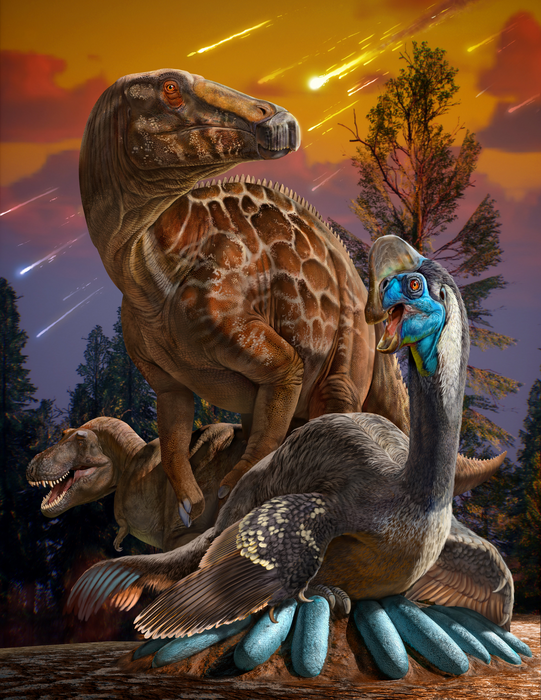Nearly 66 million years ago, a large asteroid hit Earth and contributed to the global extinction of dinosaurs, leaving birds as their only living descendants.

Credit: IVPP
Nearly 66 million years ago, a large asteroid hit Earth and contributed to the global extinction of dinosaurs, leaving birds as their only living descendants.
Scientists know that a wide variety of dinosaurs lived around the world at the end of the Cretaceous period just before their extinction. However, scientists have debated whether dinosaurs were at their zenith or already in decline prior to their demise. In other words, did dinosaurs go out with a bang or a whimper?
Researchers from the Institute of Vertebrate Paleontology and Paleoanthropology (IVPP) of the Chinese Academy of Sciences, along with their collaborators, now have an answer. They’ve found evidence to support the hypothesis that dinosaurs were not very diverse before their extinction and had declined overall during the last part of the Cretaceous.
Their findings were published in PNAS on Sept. 19.
Most of the scientific data on the last days of the dinosaurs come from North America. Although some published studies suggest that dinosaur populations there were thriving quite well before extinction, other more detailed research has suggested that dinosaurs were instead in decline, which set the stage for their eventual mass extinction.
By examining the dinosaur record in China, the Chinese researchers hoped to determine whether this declining trend extended to Asia as well.
The researchers studied over 1,000 fossilized dinosaur eggs and eggshells from the Shanyang Basin in central China. These fossils came from rock sequences with a total thickness of ~150 meters. The researchers obtained detailed age estimates of the rock layers by analyzing and applying computer modeling to over 5,500 geological samples. This allowed the scientists to create a timeline of nearly 2 million years at the end of the Cretaceous—with a resolution of 100,000 years—representing the period right before extinction. This timeline allows direct comparisons with data from around the world.
The scientists identified a decline in dinosaur diversity based on the Shanyang Basin data. For example, the 1,000 dinosaur egg fossils collected from the basin represent only three different species: Macroolithus yaotunensis, Elongatoolithus elongatus, and Stromatoolithus pinglingensis. In addition, two of the three dinosaur eggs oospecies are from a group of toothless dinosaurs known as oviraptors, while the other is from the plant-eating hadrosaurid group (also known as duck-billed dinosaurs).
A few additional dinosaur bones from the region show that tyrannosaur and sauropod also lived in the area between about 66.4 and 68.2 million years ago. This low diversity of dinosaur species was sustained in central China for the last 2 million years before the mass extinction. The small number of dinosaurs in the Shanyang Basin and central China is far from the world depicted in Jurassic Park.
These results—in concert with data from North America—suggest that dinosaurs were probably declining globally before their extinction.
This worldwide, long-term decline in dinosaur diversity through the end of the Cretaceous Period and sustained low number of dinosaur lineages for the last few million years may have resulted from known global climate fluctuations and massive volcanic eruptions, i.e., from the Deccan Traps in India. These factors may have led to ecosystem-wide instability, thus making non-bird dinosaurs vulnerable to mass extinction coincident with the asteroid impact.
Journal
Proceedings of the National Academy of Sciences
DOI
10.1073/pnas.2211234119
Article Title
Low dinosaur biodiversity in central China 2 million years prior to the end-Cretaceous mass extinction
Article Publication Date
19-Sep-2022




